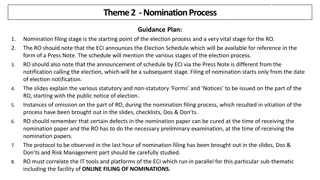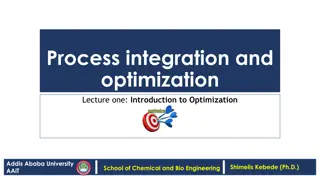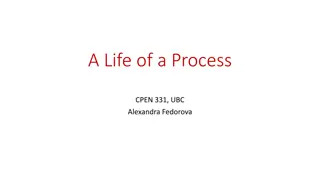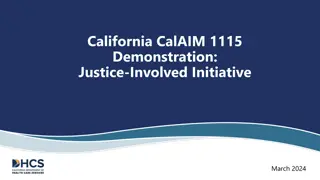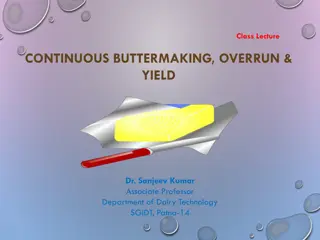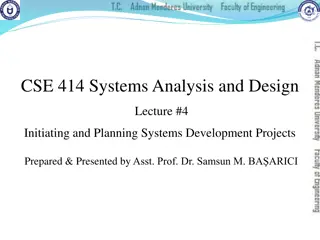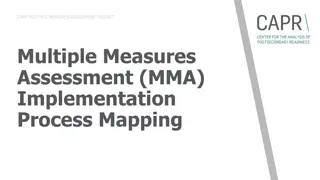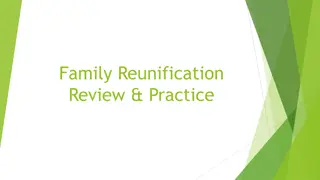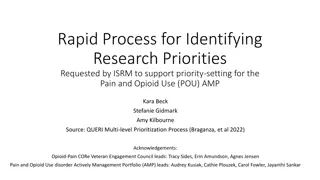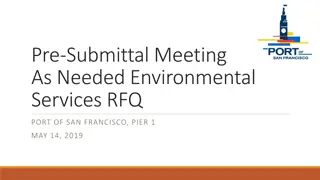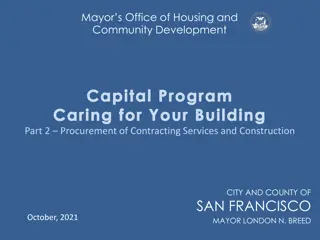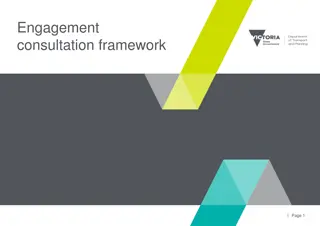
Process of Counselling Explained by Dr. N. Antony Prakash
Understand the process of counseling as outlined by Dr. N. Antony Prakash, Assistant Professor in the Department of Social Work. From awareness of the need for help to developing relationships, aiding expression of feelings, exploring deeper emotions, integration, and time perspective, this guide covers key steps in counseling. Discover how counselors help clients gain insight, adjust to reality, and develop successful counselor-client relationships for effective therapy sessions.
Download Presentation

Please find below an Image/Link to download the presentation.
The content on the website is provided AS IS for your information and personal use only. It may not be sold, licensed, or shared on other websites without obtaining consent from the author. If you encounter any issues during the download, it is possible that the publisher has removed the file from their server.
You are allowed to download the files provided on this website for personal or commercial use, subject to the condition that they are used lawfully. All files are the property of their respective owners.
The content on the website is provided AS IS for your information and personal use only. It may not be sold, licensed, or shared on other websites without obtaining consent from the author.
E N D
Presentation Transcript
Process of Counselling Dr.N.Antony Prakash Assistant Professor Department of Social Work JMC, Trichy-20
PROCESS INVOLVED IN COUSELLING 1. AWARENESS OF NEED FOR HELP: Most individuals problems. Some individuals experience their problems either because of their severity or because someone close draws problems. Seek psychological distress Lack necessary competence and information to deal with them on their own. go about with their attention to the assistance due to
PROCESS INVOLVED IN COUSELLING 2. DEVELOPMENT OF RELATIONSHIP: This can be viewed as a bridge connecting the counsellee s personality with that of counsellor s penetrating through the outer defenses. It is characterized by mutual liking, trust and respect. Counsellor should break the outer defense of the counsellee expressed as helpless attitude and pretend to gain sympathy
PROCESS INVOLVED IN COUSELLING 3. AID THE EXPRESSION OF FEELINGS: It means the ventilation of feelings by the client and experience a feel of relief . Helps in clarifying his problems is of momentous value in the counselling process. 4. EXPLORATION OF DEEPER FEELINGS: The counsellor must try to explore the deeper feelings and conflicting situations which were not dealt have to be resolved and thus involves analysis
PROCESS INVOLVED IN COUSELLING 5. INTEGRATION PROCESS: Consist of working in close harmony with the client with due understanding regard and synthesize for the client s innermost feelings. counsellor is able to synthesize and integrate counsellee potentialities, needs and aspiration and direct them towards appropriate goals. 6. TIME PERSPECTIVE: Counsellee is not able to see the present as logically arising from the past or the present affect the future.
PROCESS INVOLVED IN COUSELLING 7. DEVELOPING THE AWARENESS OF COUNSELLEE: Help the client gain insight into himself as well as insight in to the world around him. An intellectual insight which means a rational understanding is essential. 8. ENABLE THE COUNSELLEE TO ADJUST TO REALITY AND TERMINATION: Encourage the client to adapt himself to his surroundings and adjust himself to the world of realities
COUNSELLEE COUNSELLOR RELATIONSHIP The success of counselling interview depends on the nature of the relationship between the counsellor and the counsellee , the latter s readiness to communicate and his real desire to improve. Effective relationship permissiveness, kindliness and warmth. This relationship helps in reaching therapeutic relationship and helps in counsellee s problem, greater personal balance, more tolerance and better integration of his personality. is reflected through
COUNSELLEE COUNSELLOR RELATIONSHIP Counselling relationship exhibit affection and social bonds. Counselling relationship is open and accepting where the counsellor accepts everything the counsellee says as an experience that can occur in human beings responsibility it or without evaluating it. Counsellor extends unconditional acceptance of the client. without taking
FACTORS INFLUENCING COUNSELLEE COUNSELLOR RELATIONSHIP Reflection of feeling Sharing of experience Stereotype expression Timing Selection of feelings Content Depth Meaning Language
FACTORS INFLUENCING COUNSELLEE COUNSELLOR RELATIONSHIP Acceptance helps the client to get involved in the counselling proces Transference is a process by which the clients attitudes are transferred to the counsellor Counter transference is the projection of the counsellor s feeling towards the client Resistance in the counselling relationship as a special defensive form of transference and the cousellor reduces the resistance as far as possible.
INTERVIEW TECHNIQUES IN COUNSELLING There is a subjective element involved in the choice of a specific technique by the counsellor. Counsellors develop varying styles based on their appreciation of the counsellee s needs. 1. Basic Nature of the approach used in counselling Clientcentered approach, directive approach, authoritarian approach and the eclectic approach. 2. Degree of lead taken by the counsellor in the kind of communication,
INTERVIEW TECHNIQUES IN COUNSELLING Silence is a time honoured technique employed by the counsellors. There could be a pause in the conversation. Use it deliberately for organizational purposes or to terminate the counselling session.


